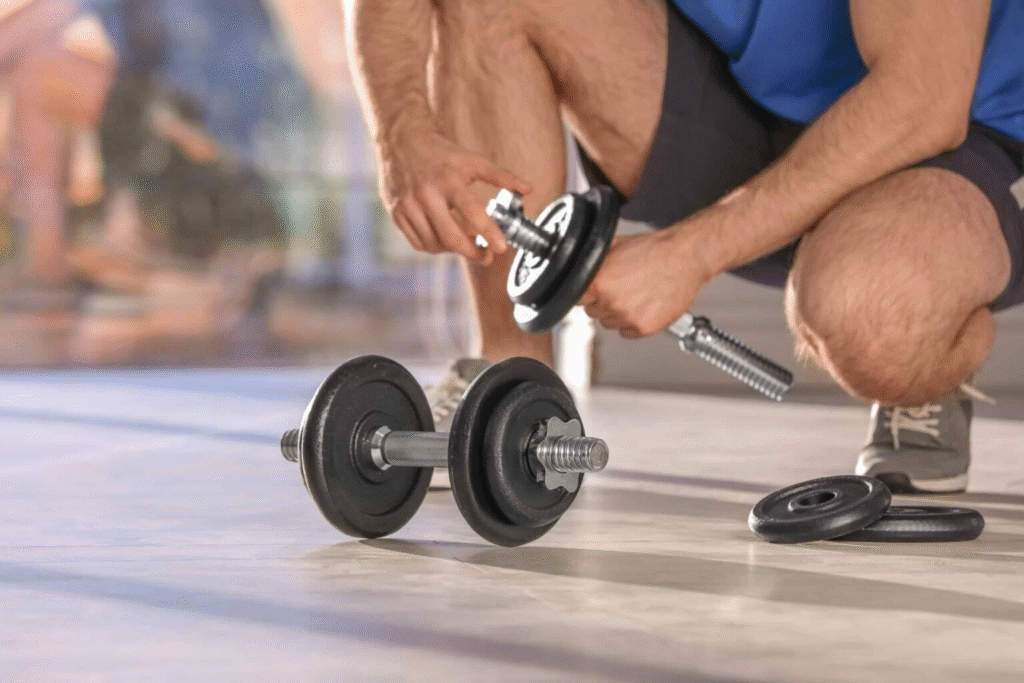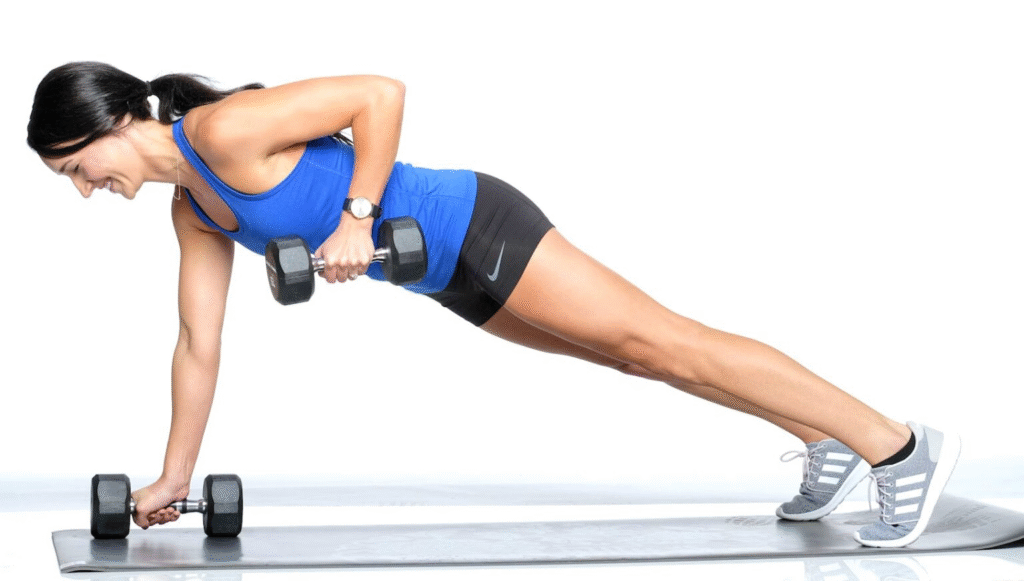Dumbbells are a powerhouse in any fitness routine—versatile, effective, and accessible. But using them the wrong way can backfire, leading to poor results or even injury. Whether you’re new to strength training or a seasoned lifter, avoiding key mistakes with dumbbells can help you get stronger, faster, and safer. Let’s break down the most common dumbbell mistakes—and how to fix them to protect your body and maximize your gains.
1: Swinging the Weights Instead of Controlling Them

It’s tempting to use momentum when lifting heavier dumbbells, especially during curls or shoulder presses. But swinging the weights takes the focus off your muscles and shifts it to your joints, raising your risk of injury while reducing muscle activation.
How to fix it:
Slow down and prioritize control. Aim for a 3-4 second lowering phase in exercises like curls or presses, and avoid using your hips or back to power the movement. If you find yourself swinging, lower the weight until you can perform the exercise with strict form. Keep your core tight and focus on moving only the target muscle.
“If you can’t lift the weight without swinging, it’s too heavy,” says strength coach James Bennett. “Drop down and focus on form.”
2: Letting Your Arms Do All the Work

In moves like rows, deadlifts, or presses, relying solely on your arms reduces engagement of larger muscle groups like your back, chest, or glutes. This not only limits strength gains but can also fatigue smaller muscles too quickly.
How to fix it:
Think of your arms as hooks holding the weight while your big muscles do the work. During rows, consciously squeeze your shoulder blades together as you pull. For deadlifts, focus on driving through your hips and glutes rather than pulling with your lower back or arms.
“Imagine your arms are just hooks,” Bennett advises. “Let the big muscles lift.”
Adding exercises like renegade rows or lat pullovers can further strengthen back engagement and reduce over-reliance on the arms.
3: Dropping or Slamming Dumbbells

It might look cool to drop your dumbbells after a tough set, but it’s a risky habit. Dropping weights can damage gym equipment, bother others, and more importantly, put stress on your wrists, elbows, and shoulders.
How to fix it:
Always lower the weights with control, even when fatigued. For exercises like dumbbell bench presses, resist letting the dumbbells fall onto your chest. Instead, guide them down slowly to maintain muscle tension and protect your joints.
“Controlled lowering is where the magic happens,” says Bennett. “It builds strength and stability while preventing injuries.”
Opt for rubber-coated dumbbells to reduce noise and impact, and gently place them down when finished.
4: Poor Posture and Alignment

Bad posture can sabotage exercises like squats, lunges, or overhead presses, placing extra stress on your spine, shoulders, and knees. Slouching, leaning forward, or letting your shoulders round forward increases the chance of injury, especially during heavier lifts.
How to fix it:
Prioritize posture every time you lift. Stand tall with your chest up, shoulders back, core engaged, and knees soft. For moves like squats or deadlifts, hinge at the hips while keeping a neutral spine.
“Posture is non-negotiable,” Bennett emphasizes. “If you can’t maintain good form, lighten the load or modify the move.”
Practicing mobility drills like wall angels can help reinforce proper shoulder and spinal alignment before lifting.
| Common Dumbbell Mistake | Risk | Fix |
|---|---|---|
| Swinging weights | Less muscle engagement, joint strain | Slow down, use lighter weight, focus on control |
| Using arms too much | Neglects big muscles, faster fatigue | Engage back/glutes, think “arms as hooks” |
| Dropping/slamming dumbbells | Joint stress, equipment damage | Lower with control, use rubber-coated dumbbells |
| Poor posture | Spinal, shoulder, knee injury | Maintain alignment, practice mobility drills |
Avoiding these mistakes not only keeps you safe but ensures every rep counts. With better control, muscle engagement, and form, you’ll see better results—and fewer injuries—over time.
FAQs
Can I still lift heavy without swinging the weights?
Yes! Lifting heavy is about control, not momentum. Reduce the load slightly until you can complete reps with proper form.
Why is posture so important with dumbbells?
Good posture protects your spine and joints while allowing your muscles to work efficiently, reducing the risk of strains or injuries.
Should I avoid dropping dumbbells at all times?
Unless you’re lifting very heavy weights in a setting designed for it (like Olympic lifting platforms), it’s safer and more respectful to lower weights gently.
How do I know if I’m using the right weight?
If you can complete your reps with control, proper form, and without compensating (swinging, arching your back), the weight is appropriate.
What exercises are best for fixing posture?
Wall angels, scapular retractions, and planks help improve posture and alignment for dumbbell exercises.









